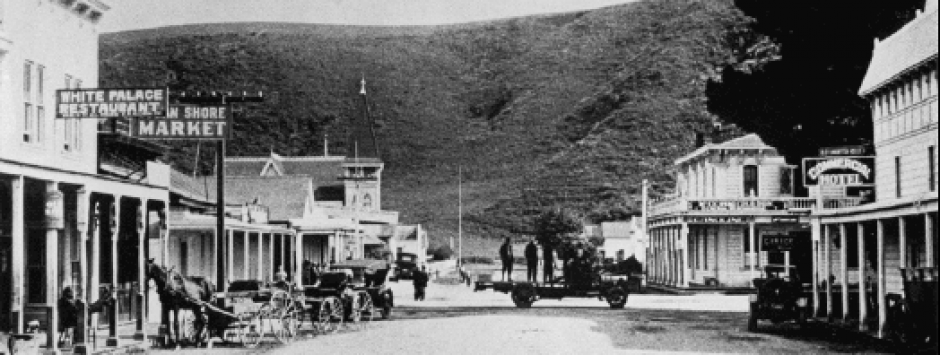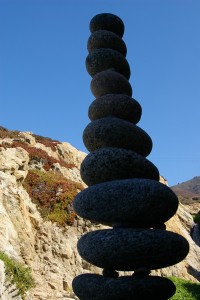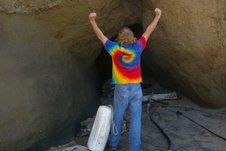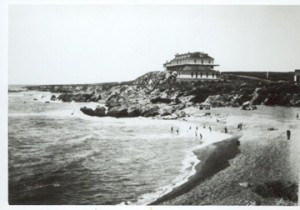Below: John Vonderlin’s message to the PurplePeople
PurplePeople,
While doing some onsite exploring and photographing for a story I am writing about Coburn’s Folly, I noticed an odd colored(for that area)rock and discovered the geocache you created. A websearch easily located your geocache and you, so I joined this site to contact you. Reviewing some of your other caches I see you like to do interesting and educational postings about unusual places. Very enjoyable. While I’m not a geocacher, I follow a very similar m.o. in my postings about little known places on the San Mateo Coast. I post on several of June Morrall’s eclectic blogs, especially the PescaderoMemories.com one, as the south coast is my favorite haunt. June wrote, “The Coburn Mystery” and several other books about the San Mateo coast.
We’d like you to post some of your stories. If you are interested in exploring and creating geocaches in some very interesting and/or very difficult to reach spots along the coast you might want to read my stories. Or join us on our expeditions. If there is no issue of trespass or sensitivity to privacy or resource protection my stories give good directions to the spots we explore, often using the pictures at the California Coastal Records Project website.
The PescaderoMemories.com website has grown rather large this last year, so it might be hard to find the stories about the most interesting places in the Archives, but I’d be glad to help if you’re interested. June has an older, larger, blog, HalfMoonBayMemories, that covers the northern San Mateo Coast, that you might also be interested in because of your location. Hope to hear from you. John Vonderlin [email protected]
———————
The PurplePeople message to John Vonderlin
John – good to hear from you. I have indeed been aware of June’s HMB site, it was part of the inspiration for my Ocean Shore Railroad series of geocaches. I say my, but ‘PurplePeople’ is really two of us: myself, Tim Oren (just google) and my wife Pat. I do the cache design and placement, and we both hunt them. We currently live in Emerald Hills near Edgewood Park, but lived in HMB for four years, hence our enthusiasm for the Coastside. We’re both hiking enthusiasts and amateur naturalists, which led us to geocaching. I’ve also been part of a small group that volunteers to do trail surveying and layout for parks in the area, which is part of what started me into digging through old maps and records.
You’re correct that almost all my caches have a historic or natural history theme, except for a few ‘neighborhood caches’ that are meant to point out obscure local parks and the like to visitors to Emerald Hills. Nothing against others’ styles of hides, but I like to do something that really distinguishes a spot, rather than being yet another ammo can under a bush.
I didn’t know about June’s Pescadero website, so thanks for that. (I did know about the Coburn book.) If nothing else, you’ve answered the question I’ve had for some time about what happened to the Palmer Gulch trestle. It might a little too far out of the way for a hide, but I’ll make the trek someday and check it out – it would be the perfect culmination for the Ocean Shore cache series. I’ll go through the website and see if anything else suggests itself. Beyond private property lines and environmental concerns, another constraint on cache placement is the presence of pre-existing hides; there’s a restriction of at least 1/10 mile between caches. (One personal limitation that will hopefully end at some time: I’m still in rehab for a badly broken leg suffered in January, so I’m somewhat limited in exploring uneven terrain until I’m through that process.)




